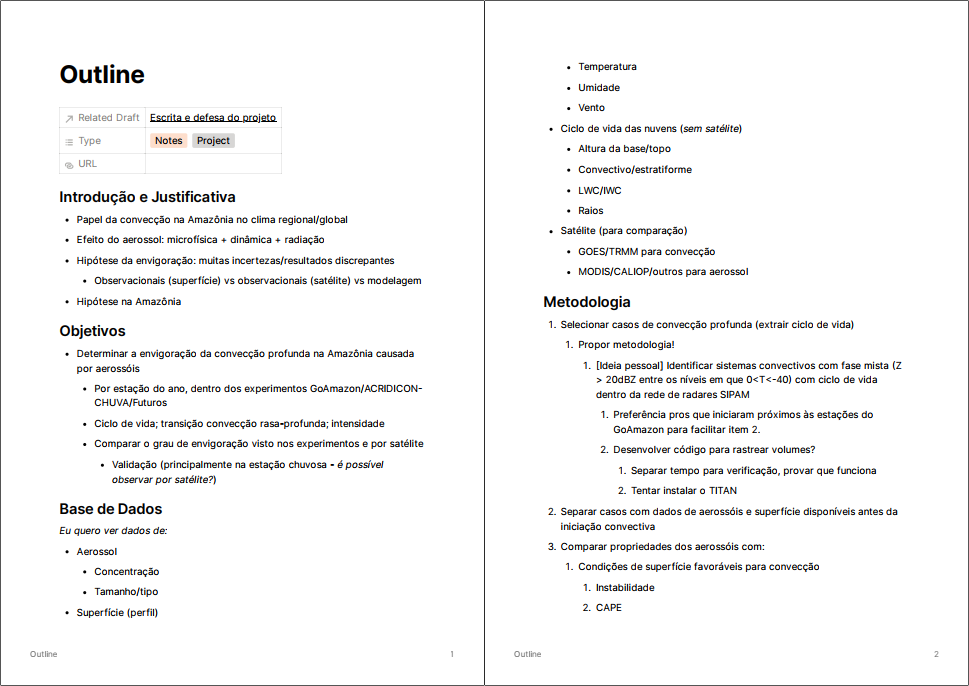Writing the PhD project
Mapping the big figure, finding the gap, outlining.
After finishing my Masters dissertation, it took me several (painful) months to define what I was going to do during my PhD. The main idea was to explore a different region of Brazil (Amazônia) and its complex interaction between clouds, aerosols and land use. I tried to gather as much information as I could on the subject, and after a failed attempt with a “bad” project I used some different resources to come up with a better, more defined version. These resources not only helped with the document itself, but improved my knowledge on the subject and made me more confident to successfully defend it in the admission process.
In this post, I will describe two of these resources and how they helped me to create the research project.
These resources came from tips during a great talk by Rafael Rosolem (former IAG-USP student!) about research skills.
Using a mind map
Mind maps are great tools to organize chains of ideas. They come in different shapes and colors, but they are constructed in the same way: connecting topics. They can be done by hand (post-its are perfect for that!) or using several kinds of softwares in PC/smartphones/tablets.
Since I like to use my iPad for taking notes, I decided to use an app with a PC webpage available aswell. After a lot of tests, I choosed Miro because of their free education plan with unlimited boards and several templates, incuding mind maps.
The idea for the mind map related to my research project (linked below) was to outline topics and important information of a long review paper ( Altaratz et al., 2014) about a interesting subject for me that turned out to be the basis of my project. I defined the main topic as “Deep Convection in Amazônia” and went from the “big picture” to the “small picture”. It took some time, but doing this really helped to better understand the topic and ultimately find the gap (connect observations with remote sensing studies in the region) that I could explore in my thesis. The final result was a big and detailed mind map that I will always use as a reference when I feel lost.
Writing the project using an outline
Having a gap to explore, the next step was to write the project. Something that really accelerated the writing process was to outline the whole document. This “technique” is basically define what you are going to write in each section (introduction, database, etc), subsection and even paragraph. Part of the outline I did (exported from Notion) is showed below (in portuguese).
As soon as I had the idea for the project, I wrote an outline describing what I wanted to do and how I wanted to do. I was so excited with the “full version” of the outline that I immediately sent to my advisor to show my idea and ask her feedback, which she gave not long after that. After a week or so, my project was done!
